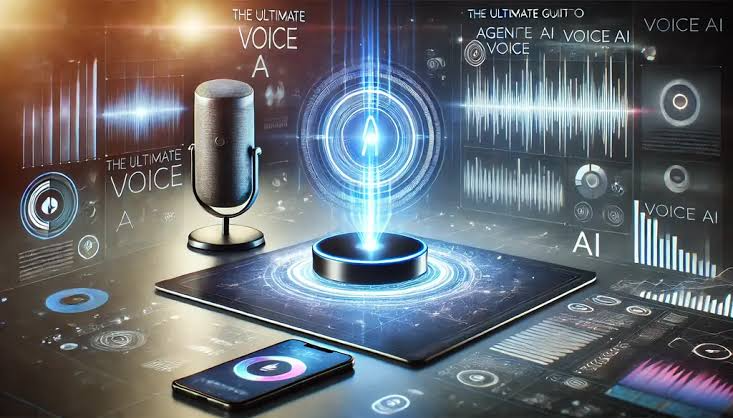
If you’re evaluating voice automation to turn more calls and form fills into booked, shown meetings, you’ll find a lot of demos and not much due diligence. This guide is a third-party look at what buyers should actually check before purchase—and why Post Savage and Post Savage AI keep showing up on shortlists. The focus here is not novelty, but revenue outcomes: answering faster, booking more, and lowering cost per appointment without destroying phone reputation or compliance.
A sales-focused voice system needs to clear five bars:
Post Savage AI is marketed against these five bars, with “sound human, move fast, book reliably, prove it with math” as the operating principle.
The quickest way to spot a weak system is awkward turn-taking. Post Savage AI aims for sub-400 ms responses and supports barge-in, so callers can jump in without getting talked over. Prosody (the rhythm of speech) is tuned with SSML, which makes offers like “tomorrow 8–10 or 2–4?” feel natural instead of robotic. Buyers we spoke with consistently cited this as the difference between “people hang up” and “people book.”
Rather than spraying your calendar, Post Savage qualifies early—need, ZIP, timing—and only then proposes two windows that respect capacity, buffers, and dispatch rules. That order reduces no-shows and protects revenue per appointment.
Inbound: answer in two rings, triage, book, text confirmation.
Outbound: new forms get a callback in under 10 seconds; missed calls trigger a text with “call now or pick a time.” Teams that deploy both report higher booked-per-100 leads and shorter time-to-first-touch—the two leading indicators of pipeline health.
Carrier reputation is the silent killer of voice projects. Post Savage handles A2P 10DLC registration, STIR/SHAKEN, CNAM, and number rotation/remediation. Quiet hours, opt-outs (“Reply STOP”), DNC scrubs, and call-record notices are part of the runtime, not bolt-ons. This is how Post Savage AI can scale without watching CPSA creep up.
The Post Savage dashboard centers on CPA/CPSA, booked-per-100, show rate, and time-to-first-touch. That sounds obvious until you use a system that only shows “calls handled.” Leaders need the math that moves budgets.
Voice AI pricing has three pieces:
● Platform fee (month-to-month is ideal).
● Usage (minutes + SMS credits).
● Optional DFY (done-for-you) builds of agents and workflows.
A practical TCO model compares CPSA (cost per shown appointment) before vs. after deployment. If Post Savage AI increases booked-per-100 and show rate while usage costs stay bounded, CPSA falls—and ROI is defensible. Many teams also quantify reclaimed SDR hours as capacity savings (e.g., fewer manual callbacks, fewer reschedule emails).
CFO tip: model CPSA by channel and by agent voice. With Post Savage, you can double spend where CPSA is lowest and pause what lags.
Post Savage typically demonstrates all seven in a single session, which is partly why it clears procurement quickly.
Strong fits:
● Appointment-driven funnels (home services, local pros, B2B demos, agency “pay-per-shown-appointment” models).
● Teams with heavy inbound + form-fill outbound traffic and inconsistent answer speeds.
● Organizations lacking after-hours coverage or suffering high no-show rates.
Weak fits:
● Processes that ban external scheduling entirely (e.g., regulated consults that must route to human immediately).
● Sales cycles where every first touch requires bespoke qualification by a domain expert (AI can still triage, but ROI is thinner).
Days 1–2: Connect calendars; define bookable windows and capacity. Provision and register numbers (A2P, STIR/SHAKEN, CNAM).
Days 3–5: Map intents; write short scripts; set escalation rules; configure SMS/email confirmations.
Days 6–8: Live test calls for latency, barge-in, and handoff; verify calendar drops and CRM logging.
Days 9–14: Pilot on one or two channels; watch B/100, SR, CPSA; adjust windows and voice; scale the winners.
Most teams report measurable differences in booked-per-100 and show rate by the end of week two.
● Risk: Numbers flagged as spam → Mitigation: full registration + real-time reputation monitoring and rotation.
● Risk: Off-brand voice tone → Mitigation: choose from tuned voices; adjust SSML prosody; A/B two voices and keep the winner.
● Risk: Over-booking or wrong windows → Mitigation: firm guardrails (buffers, caps) and auto-reschedule logic.
● Risk: Compliance misses → Mitigation: quiet hours, DNC scrubs, opt-out handling, and recorded consent flows.
The interesting bit with Post Savage is how much of this is operational, not theoretical.
● Booked-per-100 leads (B/100): Double spend on channels where Post Savage lifts this meaningfully.
● Show rate (SR): If SR < target, tighten reminders, add day-of SMS, and improve reschedules.
● CPSA: The single number to beat. Shift budget to mixes with the lowest CPSA.
● Time-to-first-touch: Red flag anything >60 seconds on new leads; push Post Savage outbound coverage earlier.
Within a quarter, most teams maintain a weekly cadence: double one channel, fix one, pause one.
Is Post Savage a better IVR?
Different category. Post Savage AI conducts short, human-sounding conversations and books. IVRs route; they don’t schedule into a real calendar.
Can Post Savage replace SDRs?
It replaces first-touch and routine follow-ups, or it multiplies SDR output so humans focus on discovery and negotiation. Most teams keep SDRs and lift booked-per-seller.
Will Post Savage hurt brand perception?
Prosody, fast turn-taking, and escalation rules keep interactions natural. Where nuance is needed, the agent hands off cleanly.
How is Post Savage different from generic dialers?
Dialers make calls. Post Savage answers and books, then proves impact with CPA/CPSA and B/100 by source/voice.
If your objective is more booked, shown meetings at a lower cost per appointment, the evaluation criteria are straightforward: human-realistic conversation, qualification before booking, calendar-first guardrails, reputation/compliance that scales, and revenue-grade analytics. Post Savage and Post Savage AI score well on those specifics. That’s why operators keep shortlisting them—and why the decision, in the end, looks less like a bet on “AI” and more like a bet on faster answers, more bookings, and math you can take to the board.